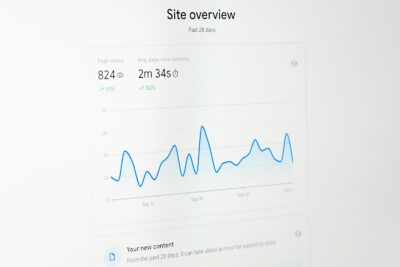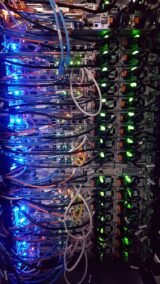Enhancing Data Accuracy
Driving Innovation in Data Processing
Edge computing is revolutionizing the landscape of real-time analytics, particularly in industries where data accuracy is paramount. In Saudi Arabia and the UAE, businesses are leveraging edge computing technologies to process data closer to the source, minimizing latency and improving the accuracy of insights derived from real-time analytics. By decentralizing data processing tasks and distributing them across edge devices, organizations can achieve faster response times and reduce the risk of data errors or inconsistencies. This innovative approach to data processing not only enhances operational efficiency but also enables businesses to make more informed decisions based on reliable, up-to-date information.
Optimizing Network Bandwidth Usage
One of the key advantages of edge computing in real-time analytics is its ability to optimize network bandwidth usage by filtering and aggregating data at the edge before transmitting it to centralized servers or cloud platforms. In industries such as manufacturing, transportation, and healthcare, where large volumes of data are generated continuously from sensors, IoT devices, and other sources, edge computing helps alleviate network congestion and reduce data transfer costs. By pre-processing data at the edge and only transmitting relevant information to centralized systems, businesses can minimize bandwidth requirements and ensure timely delivery of critical insights for decision-making, without compromising on data accuracy or integrity.
Enabling Predictive Analytics at the Edge
Furthermore, edge computing empowers organizations to implement predictive analytics models directly at the edge, enabling them to anticipate and respond to emerging trends or events in real-time. By deploying machine learning algorithms and AI-powered analytics tools on edge devices, businesses can extract valuable insights from streaming data streams and take proactive measures to optimize operations, mitigate risks, and capitalize on opportunities as they arise. Whether it’s predicting equipment failures in industrial settings, optimizing supply chain logistics, or personalizing customer experiences in retail environments, edge computing facilitates the delivery of actionable insights at the point of need, driving agility, competitiveness, and innovation across various industries.
Challenges and Opportunities in Edge Computing
Addressing Security and Privacy Concerns
Despite its transformative potential, the widespread adoption of edge computing in real-time analytics poses significant challenges, particularly in terms of security and privacy. With data being processed and stored on distributed edge devices, businesses must implement robust security measures to safeguard sensitive information and prevent unauthorized access or tampering. Moreover, concerns around data privacy and regulatory compliance require organizations to establish clear policies and protocols for data governance, consent management, and compliance with industry standards and regulations. By addressing these security and privacy concerns, businesses can build trust and confidence in edge computing solutions and unlock new opportunities for innovation and growth.
Fostering Collaboration and Knowledge Sharing
To fully harness the benefits of edge computing in real-time analytics, businesses must foster collaboration and knowledge sharing among stakeholders, including technology providers, industry experts, and policymakers. By sharing best practices, lessons learned, and use cases, organizations can accelerate the adoption and implementation of edge computing solutions, drive standardization and interoperability, and address common challenges and barriers to entry. Moreover, investing in workforce development and talent acquisition is essential to building a skilled workforce capable of designing, deploying, and managing edge computing infrastructure and applications effectively. By nurturing a culture of collaboration and continuous learning, businesses can position themselves for success in the era of edge computing and real-time analytics.
Additional Perspectives
Looking ahead, the convergence of edge computing with other emerging technologies such as Artificial Intelligence (AI), Blockchain, and the Metaverse presents exciting possibilities for enhancing real-time analytics capabilities and driving new business models and revenue streams. From AI-powered anomaly detection and fraud prevention to blockchain-enabled data provenance and transparency, the integration of edge computing with complementary technologies can unlock new use cases and applications across various industries. Moreover, leveraging immersive digital experiences in the Metaverse for data visualization, collaboration, and decision-making can further enhance the usability and accessibility of real-time analytics solutions, enabling businesses to derive insights and value from data in novel and interactive ways.
Furthermore, investing in ecosystem partnerships and industry collaborations is essential to accelerating the development and adoption of edge computing solutions for real-time analytics. By collaborating with technology providers, industry consortia, and academic institutions, businesses can co-create innovative edge computing solutions tailored to the unique needs and challenges of specific industries and use cases. Moreover, engaging with regulatory bodies and standards organizations can help establish guidelines, frameworks, and best practices for the responsible and ethical use of edge computing in real-time analytics, ensuring alignment with industry regulations and standards. By fostering an open and collaborative ecosystem, businesses can drive innovation, spur growth, and unlock the full potential of edge computing for real-time analytics in the digital economy.
Conclusion: The Future of Real-Time Analytics
In conclusion, edge computing is poised to revolutionize the field of real-time analytics, enabling businesses to achieve unprecedented levels of data accuracy, agility, and responsiveness. By decentralizing data processing tasks, optimizing network bandwidth usage, and enabling predictive analytics at the edge, edge computing empowers organizations to extract actionable insights from streaming data streams and drive informed decision-making in real-time. However, realizing the full potential of edge computing requires addressing security and privacy concerns, fostering collaboration and knowledge sharing, and investing in workforce development and talent acquisition. By embracing these challenges and opportunities, businesses can unlock new levels of innovation, efficiency, and competitiveness in the dynamic landscape of real-time analytics.
#EdgeComputing #RealTimeAnalytics #Accuracy #SaudiArabia #UAE #Riyadh #Dubai #ChangeManagement #ExecutiveCoaching #EffectiveCommunication #BusinessSuccess #ManagementConsulting #ArtificialIntelligence #Blockchain #Metaverse #GenerativeAI #LeadershipSkills #ProjectManagement























